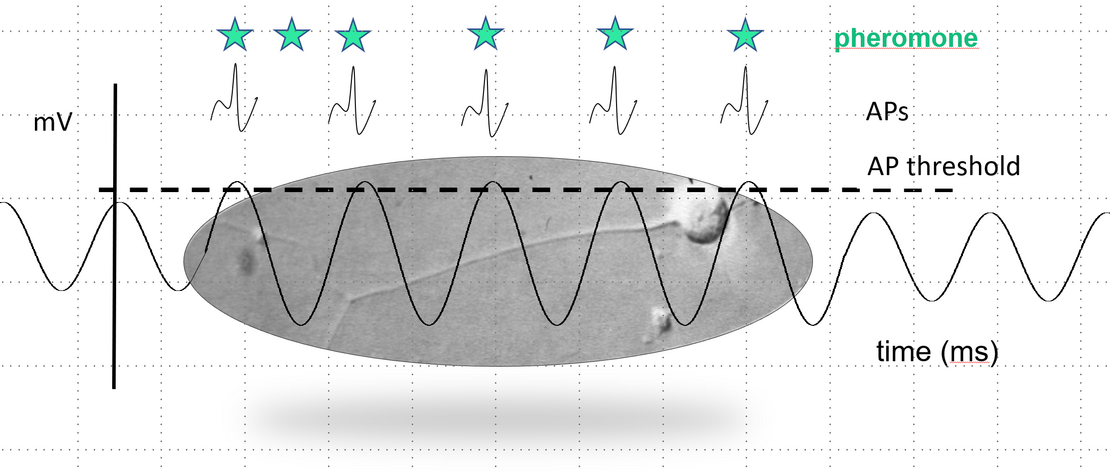Project 7
P7: Analysis of plasma membrane-dependent multiscale oscillations of hawkmoth olfactory receptor neurons
Project description
Females of the nocturnal pest-insect Manduca sexta call for their mates via rhythmic, release of sex-pheromones during a specific time window at night. Hawkmoth males smell pheromones with highly sensitive olfactory receptor neurons (ORNs) on their antennae. Upon pheromone detection males start a zig-zagging upwind flight using the ultradian frequency of pheromone pulses to locate the calling female. Thus, circadian (~24 h) and ultradian (msec to sec scale) pheromone oscillations synchronize male and female mating behavior controlled via internal (endogenous) clocks. Behavioral rhythms depend on circadian changes in pheromone sensitivity of moth ORNs which are endogenous clocks at multiple time scales. Hawkmoth ORNs express oscillations of their membrane potential at several time scales that elicit spontaneous action potentials (APs; Figure below) controlled via second messengers Ca2+, cAMP, and cGMP. Neither the molecular mechanisms responsible for multiscale potential oscillations are known, nor is it known whether plasma membrane clocks functionally link these multiscale rhythms within or between antennal ORNs for a functional purpose. Employing electrophysiology: tip recordings and patch clamp, with Ca2+ imaging, primary cell cultures, and molecular genetics, we want to examine the structure and function of membrane clocks in ORNs, how they tick based upon different voltage- and second messenger-controlled ion channels. Furthermore, we want to examine whether the membrane clocks of the sensory neurons allow the insects to tune into endogenous physiological, and, also environmental rhythms synchronizing insects´ physiology and behavior with predictable environmental changes.

future collaboration
new project of Prof. Gutekunst (Molecular Plant Physiology)
